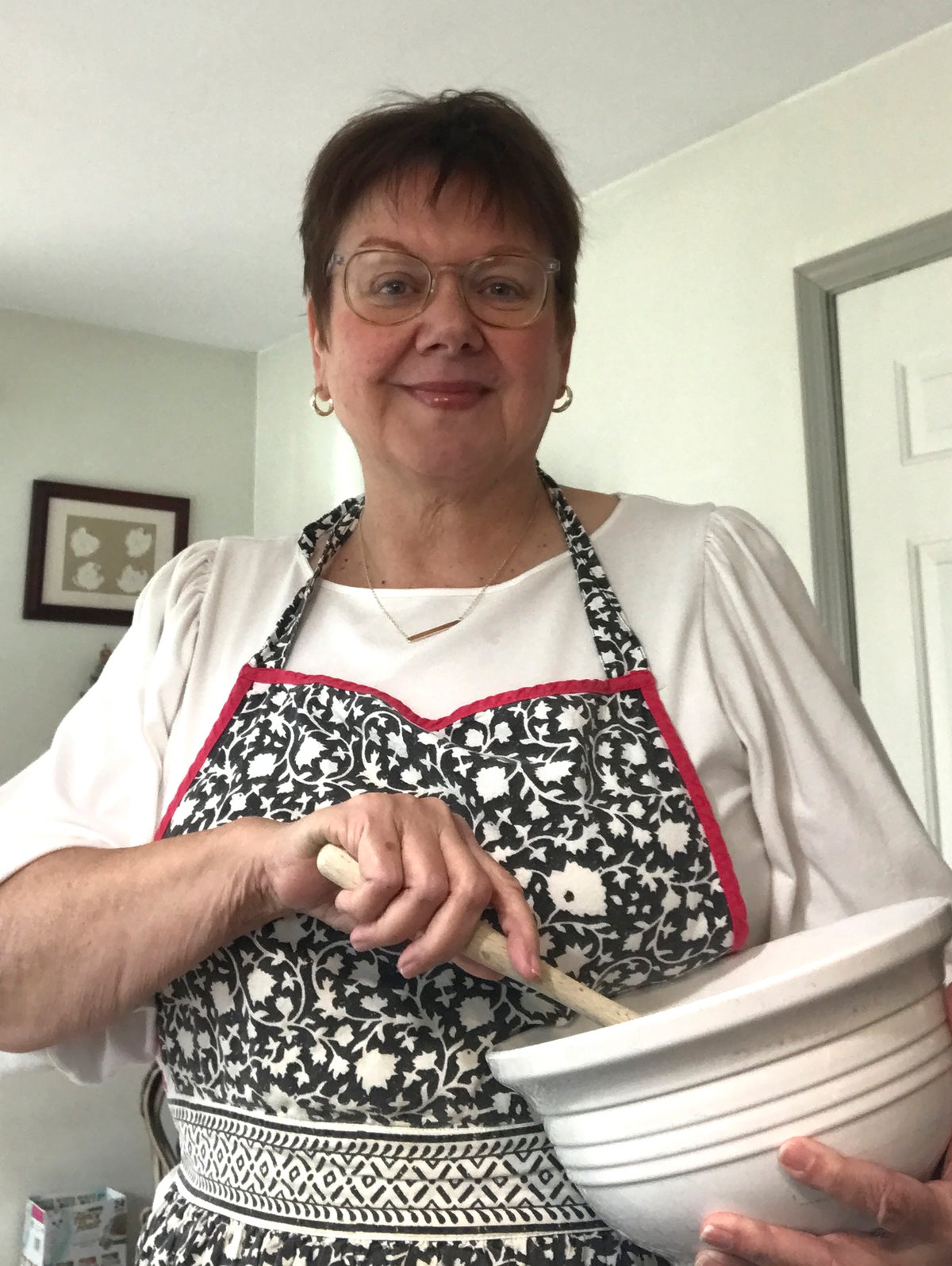
Deborah Reinhardt has fond memories of her mother and grandmother cooking in aprons dusted with flour or other signs of that day's meal. And then there were the special occasions.
“Grandma, especially, wore the fancier ones with ruffles and silky fabric for serving Thanksgiving dinner,” says Reinhardt, who lives in St. Louis and runs a food blog called Three Women in the Kitchen.
She regretted that she hadn’t saved any of those family heirlooms, but then her daughter gave her a special gift one Mother’s Day: a frilly apron. “Whenever I use it, memories of Mom and Bubba come alive. It’s almost like putting on a superhero’s cape; I feel like I can tackle anything in the kitchen,” Reinhardt says.
Aprons carry all kinds of associations. Professional cooks and contestants on TV cooking shows wear large, utilitarian ones: grill masters might have the goofy “BBQ Dad” variety.
They go especially well with Thanksgiving, evoking memories and putting the focus on the cook.
There’s something empowering about cooking with an apron on; it says you are Creating a Meal. EllynAnne Geisel, a self-described “apron archaeologist,” likens these pieces of cloth to “domestic armor.”
“Aprons don’t hold us back — they take us back," she writes in “The Apron Book: Making, Wearing, and Sharing a Bit of Cloth and Comfort."
And she notes that aprons are worn by a range of professionals, from cooks and bakers to fishmongers, welders and carpenters.
A look at some current apron styles:
As seen on ‘The Bear,’ ‘Top Chef’ and other shows
Katie Brown, a writer at Food & Wine, spotted something consistent among her favorite cooking shows “The Bear,” “Is It Cake?” and “Top Chef.”
“The chefs on my TV not only make cooking look easy, but they look great while doing it," Brown says.
Many of those chefs wear an apron from Hedley and Bennett, a brand started by a pro chef. Their “Essential” version is made of sturdy cotton twill, and features adjustable neck and waist straps and lots of big and small pockets. ("The Bear" star Jeremy Allen White often wears a dark blue one, a nod to the French Laundry restaurant in Napa Valley, California, which became known for its chefs' blue aprons.)
It’s the pockets that have won over Brown’s colleague, associate editorial director Chandra Ram.
“For me, pockets make the apron. I want to be able to stash a Sharpie and a few pieces of paper towel," says Ram. "And I like the straps to be long enough that I can tie them in front so I can hang a dish towel to use to grab a hot pan or clean up a spill. I bought kids’ versions for my nieces and nephews for when we bake together.”
Other pro-style brands include Under NY Sky, Chef Works, Bragard and Cargo Crew.
Apron variations around the world
Christopher Kimball's Milk Street nods to Japanese restaurants with the maekake, which resembles the cotton banners often seen at their entrances. Maekeke is the term for traditional Japanese workwear dating to the 16th century.
Milk Street’s version, made of indigo cotton, features an Arctic tern and the Japanese lettering for their address in Boston, 177 Milk Street.
Fans of Finnish design house Marimekko ’s prints might add an apron to their wardrobe. Choose from bold, black-and-white or colorful graphics and florals, each with a front pocket and adjustable neck strap. Many patterns have coordinating pot holders and oven mitts.
Apron designs at Portugalia Marketplace include one with colorful illustrations of sardine cans, a buzzy food trend. And a Mediterranean blue and white tile-patterned apron will make you feel like you’re in a tasca, or little restaurant, in Porto.
Cooks the world over can toast their furry friends with one of Design Imports’ aprons featuring romping dogs and cats.
For real retro, try a riff on a pinafore or flour sack
Aprons became common in the early 1900s, when America’s first chain restaurant, Harvey House, was created by Fred Harvey. The “Harvey Girls” — the wait staff’s moniker – wore floor-length white aprons. Judy Garland wore one in the 1946 “Harvey Girls” film and they became popular in American households.
And flour companies in the 1920s came out with aprons made from repurposed feed or flour sacks.
Uncommon Goods has some fun ones repurposed from old sacks and made by artisans in Ghana. The aprons feature a cheery patchwork on one side, and are reversible. Makers are part of the Fair Trade Federation, which supports local craftswomen.
—-
New York-based writer Kim Cook covers design and decor topics regularly for The AP. Follow her on Instagram at @kimcookhome.
For more AP Lifestyles stories, go to https://apnews.com/hub/lifestyle.







